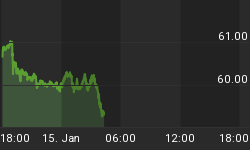Americans looking south of the Rio Grande tend to forget, if they ever knew, that Mexico is, according to the U.S. Energy Information Administration, now America's second largest source of imports. Of the United States' total crude oil imports averaging 9,033 thousand barrels per day (tbpd), Mexico is the second largest source of imports, at 1,319 tbpd, exceeded only by Canada with 2,666 tbpd.
But now, Mexico's future seems even brighter. According to U.S. Energy Information Administration Executive Director Maria van der Hoeven, Mexico's significant untapped natural gas reserves, if properly developed, could eventually provideMexico with energy independence.
On 29 November in Washington, presenting the most recent EIA report on Mexico van der Hoeven stated, "Mexico is sitting on very large natural gas fields that could allow it to end gas imports and could give it energy independence.
Van der Hoeven's assertions are backed by Mexican Energy Secretary Jordy Herrera, who said, "With the shale gas potential and reserves, and the gas associated with crude, we should become a country with sufficient energy resources, both fossil and renewable, to achieve independence, and we could eventually export, all we need to do is make decisions in favor of the Mexican people. Developing gas production is urgent, the country cannot be subjected to the political times." Herrera is salivating over official estimates, that developing Mexico's shale natural gas industry could attract $7-10 billion in annual investment. According to Herrera, government officials have been working with state-owned oil giant Petroleos Mexicanos, or Pemex, to determine the size of the country's natural gas fields and have contacted Congress to discuss the development ofthe country's indigenous natural gas reserves.
And therein lies the rub.
To unleash this natural gas, according to the EIA, Mexico will have to utilize the process of hydraulic fracturing, or 'fracking," a controversial process of injecting water and chemicals deep underground to break up shale natural gas formations that has encountered rising resistance in the U.S because of its potential to pollute underground aquifers.
So, does Mexico need to go down the environmentally contentious fracking road?
Unclear - but a little ray of sunshine for alternative fuels was provided on 1 December, when the Inter-American Development Bank (IDB) approved a $70 million loan to Mexico to boost funding for renewable energies in electricity generation to reduce greenhouse gas emissions.
The loan, whose funds were provided from the IDB Clean Technology Fund, will be matched by financing from Mexico's loan Nacional Financiera (NAFIN) development bank, along with an additional $70 million provided by an existing IDB conditionalline of credit approved two years ago, for a total of at least $210 million.
The Clean Technology Fund IDB loan will be used for the construction of at least 10 renewable energy facilities, in particular wind power plants and small hydroelectric plants, increasing Mexico's installed energy capacity from renewable sources, generating an estimated savings of greenhouse gas emissions of up to two million tons of CO2 annually.
Bereft of its platitudes and PR buzz, the discussion comes down to simplefacts.
Does Mexico want the quick peso by developing its shale natural gas reserves as soon as possible, or is it willing to take a longer term approach to renewable energy? Given the immense fiscal reserves of its giant northern neighbor and its mastery of fracking technology, the answer might seem to be fairly clear cut, and one cannot discount the inevitable influence of corruption in advancing agendas.
According to the 2000 census, only 55 percent of Mexicans received drinking water of adequate quality. Given fracking potential to pollute aquifers, if might be time for Mexico city to forgo the quick peso and tell its remaining 45 percent to citizens to be a tad more patient while the government acquires more renewable energy grants.
Source: http://oilprice.com/Energy/Natural-Gas/Mexico-Rising-Natural-Gas-Superstate.html
By. John C.K. Daly of Oilprice.com
















